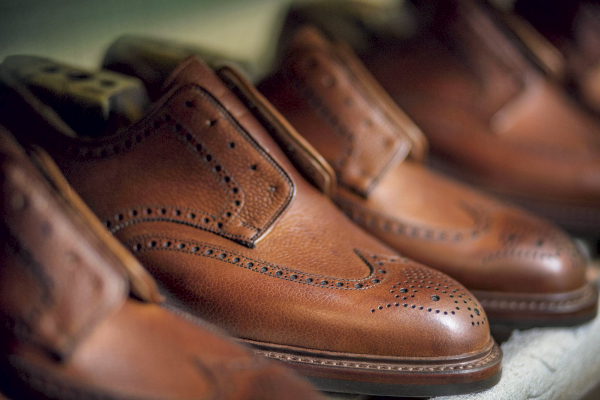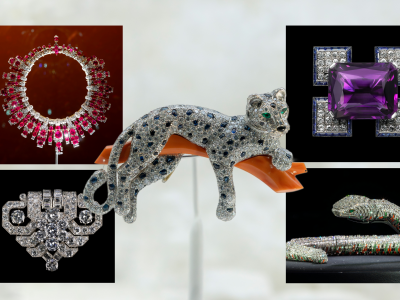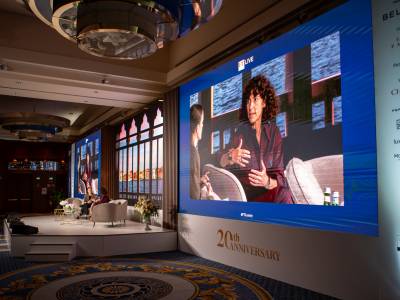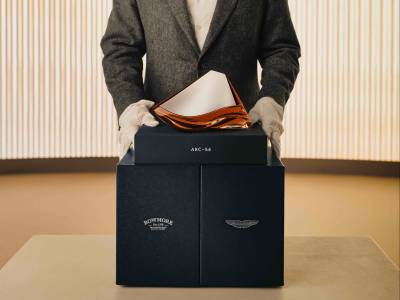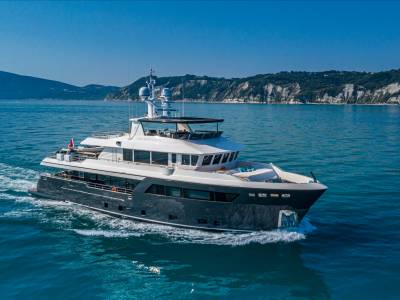There was an age when the delineation between work and leisure was clear cut, in time as in style. Dressing for the office meant a formal uniform, with men wearing shiny Oxfords or Derbys. English shoemaker Crockett & Jones has specialised in such footwear since its inception in 1879. As one of the last surviving Northampton makers of Goodyear-welted shoes and boots, the company’s reputation as among the finest manufacturers in the industry precedes it. And yet… if you look at the feet of a loyal Crockett & Jones customer these days, you’re as likely to find them in a pair of solid casual boots.
Behind Crockett & Jones' Bespoke British Boots
29th September 2023
Delve behind Crockett & Jones' bespoke British boots, from the company's origin story to the intricate steps of shoe production. Explore styles from rough-out suede Kelso boots to classic cap-toe Oxfords masterfully handmade with the aim to be worn.
Presented by Crockett & Jones
“In general, our lifestyles have become less formal,” says James Fox, head of marketing and e-commerce for the company. “Over the past decade, men have moved towards wearing more separates, for example, and that’s accepted in the workplace, excepting a few industries — though you can’t even say that of the City any more. That casual mentality has, of course, only sped up over more recent years too. And the fact is that, as a shoemaker, we can and should move with the times, keeping a foot in both formal and casual camps.”

Alongside more formal classics such as cap-toe Oxfords and black calf-leather penny or tassel loafers, Crockett & Jones’s latest autumn/winter collection offers a range of sturdier, more laid-back options — from the Harris Chelsea boot to the Islay full-brogue Derby boot; the updated cap-toe Coniston boot to the solid, plain-fronted Kelso.
This contemporary take on casual footwear is not just about Crockett & Jones’s growing desire to appeal to its customers as much at the weekend as during the week. Nor is it merely, as Fox points out, an acknowledgement that — perhaps all the more so given the cost-of-living crisis — people are now looking for more value for money from what they buy.
“That means they want more flexibility in their footwear, and more opportunities to wear their shoes with different kinds of clothing,” he states. “Certainly it’s with those kinds of more casual styles that we’re seeing the most growth. And we’re fortunate in that you don’t have to change the kind of classic shoe we’re known for all that much — use a more casual leather, change the last and combine with a rubber sole — to create a core casual style.”
Rather, this is more a return to form than the company seeking to find a new one. These new boot styles — as well as the new, reassuringly substantial Cornell and Lanark shoes — were what the founders of the company, James Crockett and Charles Jones, would once have simply regarded as best-in-class examples of practical footwear, the kind any gentleman would have had in his wardrobe during the Victorian and Edwardian eras — especially given that city streets were considerably messier then. It was the kind of footwear that, by the turn of the 20th century, the company exported around the world, to countries including Australia, South America, Canada and Asia — places yet to be urbanised; places where good boots were an everyday necessity.

Naturally, when Crockett & Jones provided footwear for the explorers on Ernest Shackleton’s Endurance expedition, or, during World War One, the soldiers of the British Army, it did not put them in nice pairs of Oxfords.
In other words, with its autumn/winter collection the company is revisiting its heritage and drawing on its roots. “We’re coming full circle,” says Fox. “In the 1920s we made cycling and football boots, so less formal styles have always been part of what Crockett & Jones is about. What’s changed is the emphasis, and the volumes we manufacture now. It’s perhaps akin to the shift on Savile Row, which can and does still make a very traditional suit, but also offers tailoring that’s more relaxed and easy.”
Likewise, that a Crockett & Jones boot is built to take on rain and mud is not to suggest that it lacks an elegant form; rather, perhaps, that the distinctive leathers used are pushed more into the limelight. If the company’s formal shoes are best lovingly polished to a uniformly high shine, the new boot collection revels in the tactile and visual appeal of the more casual leathers used, moving beyond the use of Scotch grain — a stalwart of Northampton bootmaking — to more waterproof Rough-Out Suede and Hurricane Hide. This pull-up, water-resistant leather has a smooth finish that’s soft but also hard-wearing, so will last.
Certainly, the results do a 360-degree turn on long-standing conventions of dressing for the office, in which the pristine is privileged. Both of these boot leathers offer the kind of textural, matte finishes that, rather than requiring frequent upkeep to look their best, improve with neglect, wearing into distinct shades, with markings and abrasions to give the same kind of time-worn individuality that good denim eventually achieves.
“The more battered they get, the better they look,” enthuses Fox. “That’s when their real character comes through. As the Hurricane Hide creases, the oils move through the leather to create a kind of two-tone effect. Rough-Out, with the leather the suede side up and a rough finish from the nap, is a very different kind of leather but is also one that ages really well.”
“These lovely effects of aging can only be achieved through wear,” Fox adds. “You can’t fake them convincingly. Apart from a bit of dubbin occasionally — which stops the leather drying out and helps with water-repellency — it’s best just to leave them alone. Saying that is all very strange for us when our messaging for previous shoes has always been to keep them as spick and span as possible.”
While Rough-Out Suede has become a footwear industry standard, Crockett & Jones claims to have coined the term. The company first came across this leather variety decades ago, as it was then produced by a UK tannery that Crockett & Jones had a long working relationship with. When the brand won a contract to make shoes for Ralph Lauren in the 1970s, the American designer wanted “more of a rugged style, with a really rustic leather,” Fox explains, and Jonathan Jones, of the Jones family and now the company’s CEO, knew exactly what to use.
“The problem was that it was called Waxy Commando — or something like that — and it didn’t work from a marketing point of view. So they coined the phrase Rough-Out Suede. Renaming it also helped keep competing manufacturers from using the same leather. That’s quite a commonplace tactic in the shoe industry,” laughs Fox. “Hurricane Hide is our name too.”
These leathers also give the new styles another timely advantage: combined with a rubber, Dainite or Commando sole, they make the boots and shoes they’re used for almost instantly comfortable. That matters as much as the more casual styling because, increasingly, it’s what the customer wants. As Fox notes, only older generations would expect a pair of Goodyear-welted calf-leather shoes to take several weeks of wince-inducing wear for them to be properly broken in — to, in effect, mould to the foot in an almost bespoke way

“Now we’re selling to a generation of customers who have grown up in trainers, and who expect their shoes to be comfortable from day one,” says Fox. “Today, customers won’t accept the idea that their shoes will become very comfortable eventually. We have to move with those shifts in thinking by focusing on both durability and comfort.”
Put another way, Crockett & Jones is preparing its business for another century to come. While sales of more formal, traditional styles have remained dependably steady — Fox argues that this may be a legacy of them being considered classics, and so retaining a place in every man’s wardrobe regardless of how often they might actually be worn — he predicts that it’s generally the more casual styles that will likely take a greater share of the company’s output over coming years.
“Ultimately, I think that Northampton shoemaking will have to go a similar way,” says Fox. “There will be challenges — getting around expectations that casual shoes should be less expensive than formal ones, for example, even though they’re made with the same crafts and in the same factories. But the idea of spending more on your weekend wardrobe — which, for many of us, has really become our everyday wardrobe — is having more and more influence. We just want to be at the front of that change in thinking about how men dress.”
Explore Crockett & Jones' range of Men's shoes and boots.



